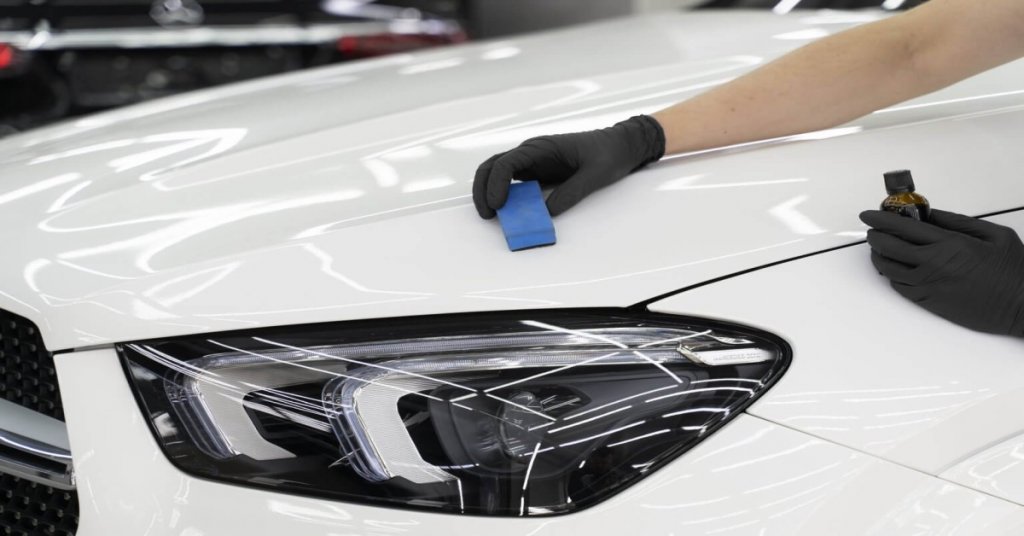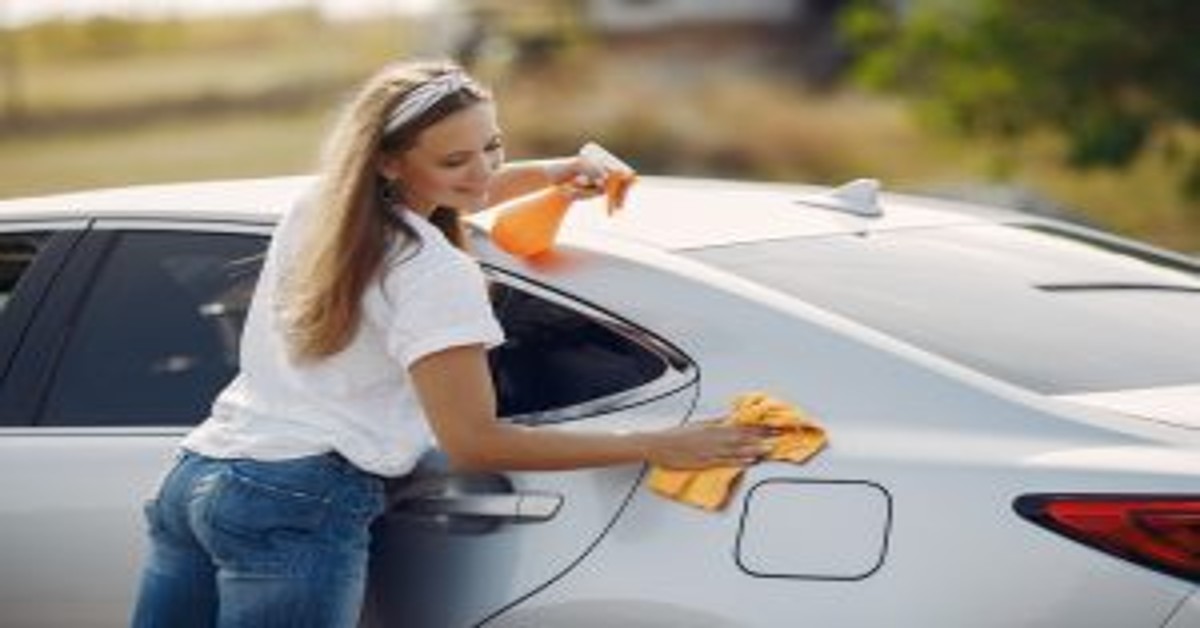A basic car wash only removes topical dirt and grime accumulated over a short period of driving. Regardless of how thorough the wash is, car wash soap does not deep clean, polish, or restore the paint from damage done by bonded contamination,
embedded dirt and staining, and different types of below-surface defects. Well-maintained and properly detailed cars are really the only cars that truly benefit from a basic wash and application of a wax or sealant.
The idea is that you have already gone through the process of decontamination (which is different from just washing) and either a light polish, which deep cleans the paint to remove embedded dirt and stains, or a full polish, which can completely remove oxidation and below surface paint defects (think restoration) and your paint just needs to be maintained by a wash and wax or a maintenance detail.
Paint decontamination
There is a crucial step between washing and polishing, which is referred to as Paint Decontamination. Paint Decontamination is a process that breaks down and removes bonded contaminants such as industrial fallout (another name for pollution), brake dust, rail dust, tree sap, and tar that embed themselves into the surface of the paint leaving the surface gritty and rough.
An easy way to check whether or not your car is covered in bonded contamination is to use the Baggie Test. All you need to do is place a sandwich baggie over your hand and feel your paint after washing. The plastic sandwich baggie enhances your sense of touch and makes inspecting your paint easier.
If your paint feels rough and gritty that means it’s contaminated. If your paint feels smooth as glass with no bumps or rough patches more than likely it’s free of bonded contamination. If you want to learn more about paint contamination check out this detailed article: How Paint Contamination Works Against Your Car & Paint.
Light polish vs. full polish

src: freepic
As we went over previously, a light polish is going to remove embedded dirt and stains from your paint but it’s not going to remove or correct any paint defects such as swirls, scratches, marring, and etching. A full polish is going to remove a very small percentage of your paint and also remove any below-surface paint defects (oxidation, swirls, scratches, etching, etc.) that were only as deep as the amount of paint removed.
For example, if you have a wooden tabletop that is 3 inches thick and you accidentally scratch the surface about 1 millimeter deep, it’s going to leave an eyesore but it’s not deep enough to structurally damage the tabletop. So what you could do to remove the defect is sand the tabletop down to right below the deepest part of the scratch in the table. This would remove the scratch and restore your tabletop to perfect condition without harming the integrity of the table.
The same concept behind removing scratches from a wooden tabletop also applies to removing them from automotive paint. The goal of polishing paint is to remove as many or as much of a scratch, swirl or etch as possible without compromising the integrity of the paint.
This is why I always approach a situation by using the least aggressive method or product to get the job done properly. I want to leave as much of the paint on the car as possible so if it gets scratched again I can repeat the process safely and still have enough paint on the car to where it can be done multiple times again.
A perfect example of not selecting the right tool for the job is to use a chain saw to cut the table in half widthwise to remove the mirror surface from scratch. You’ve drastically shortened the life of the table because the right tool, product, and technique were not properly chosen to match the situation at hand.
Now let’s suppose someone came in and hit your tabletop with an axe directly in the center. The damage was 2.5 inches deep and was in the shape of a “V”, meaning the very bottom of the 2.5-inch pit has a smaller width than the top of the pit.
Since the damage to the tabletop was so deep it’s impossible to remove the pit completely without also ruining the structural integrity of the table. It would no longer be thick enough to serve its function of being a table.
Even though you can’t completely remove the pit in the tabletop through our previous method of sanding you can make it smaller and less noticeable if you remove some of the tabletop width but not enough to where it would lose its structural integrity.
Since the pit is actually shaped like a “V”, as we remove width or material from the tabletop we are making the pit smaller and achieving the best-looking table possible without compromising the integrity of the table because at the end of the day, you still want to be able to use your table.
Deeper scratches in automotive paintwork the same way. Generally, the scratch is a pit in the paint similar to a pointy triangle (or “V”) and as you polish off paint from the surface you are making that scratch smaller and smaller.
The closer the top of the paint is to the bottom of the pit the less noticeable the scratch will be. So if you have a deep scratch it’s possible to make it look much less noticeable with polishing, even if that scratch is not safe to completely remove.
If you want to make fixing the pit in the tabletop a step further you could fill it in with some type of wood filler product, sand, and stain the table again, which would fix the pit. This repaired area may or may not match the original staining or color of the table for a number of reasons but it will be less noticeable and you won’t have any type of pits or surface defects in the tabletop.
This process is comparable to fixing rock chips or deeper scratches in automotive paint, which require spot filling, painting, sanding, compounding, and polishing until the area is as good as new or as good as it will ever be.
If you can’t stand having any type of defect or pit in your tabletop then you can always remove the legs of the table and buy another tabletop, which would be comparable to re-painting your vehicle. It’s by far the most expensive option but it will fix any and all paint defects.
The wooden tabletop analogy doesn’t work as well with a light polish as it does with a full polish and other paint correction-type processes but I’ll give you the general idea using the same analogy.
If you spill a glass of milk on a wooden table and don’t wipe it all up completely it’s going to penetrate the surface of the tabletop and over time cause staining. If you leave the spilled milk on your table for even longer it might start to damage the wood by staining and degrading everywhere the milk was able to penetrate.
A light polish would remove the embedded milk and topical staining but not any of the damage left from neglecting the stain and allowing it to deeply penetrate the table. It would improve the look of the table but it wouldn’t restore the table to its original condition because it now requires a full polish or more to remove enough of the tabletop’s surface until the etching and staining is completely removed.
A similar scenario is leaving bug guts or bird droppings on your vehicle for a couple of weeks or months. The organic matter inside the bugs and bird poop is going to interact with your paint and permanently damage the area.
If the area is cleaned in time the etching can be polished and removed, but sometimes it will be too deep and require you to re-paint the area or learn to live with the defects. To prevent this headache altogether it’s a good idea to keep 2-3 towels and a quick detailer in your truck so you can remove bird droppings and other harmful contamination as soon as possible.


